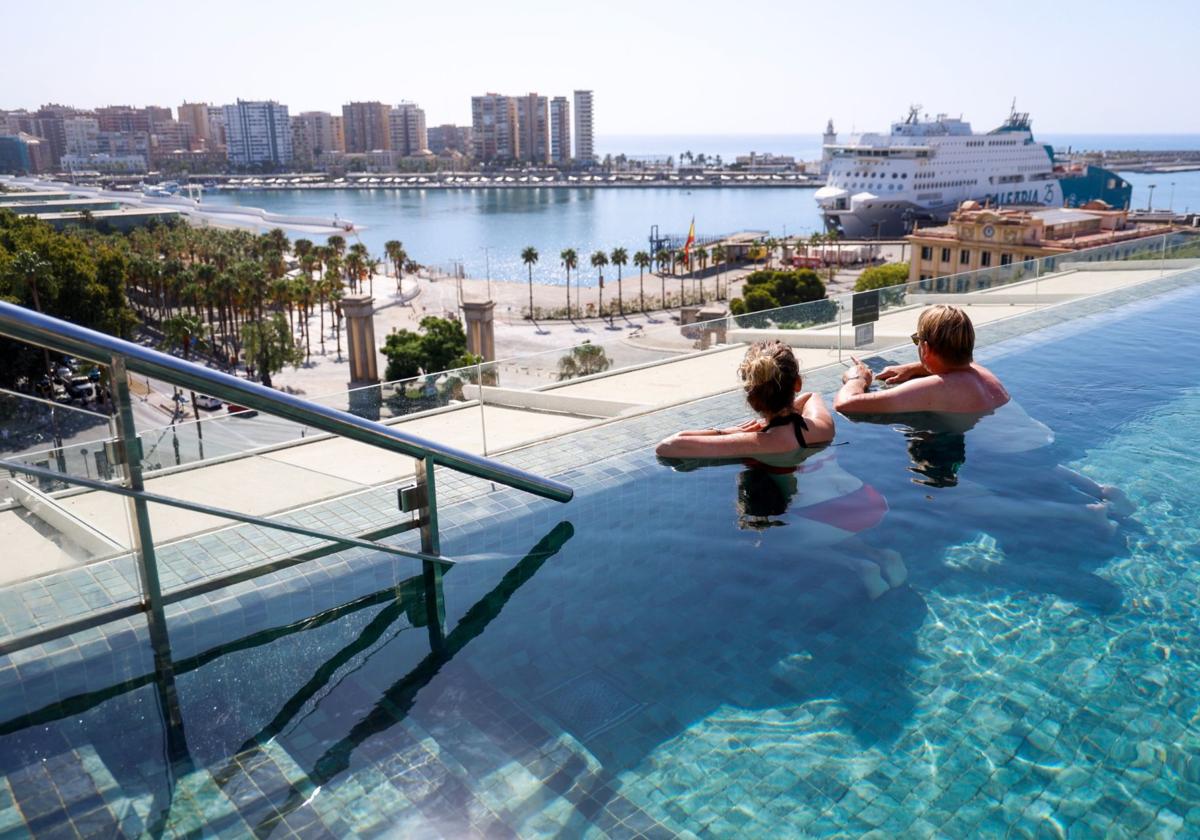Malaga city escapes tourism slump affecting the rest of the province
Hotels and tourist homes in the city have seen positive figures in the first five months of the year
Malaga is an island in the midst of the decline in tourism at provincial level. Statistics confirm that, against all odds, figures are positive for the city. To compare data at a local and at a provincial level, the first five months of the year are taken into account. During this period, the city's hotels received 705,851 guests, compared to 655,151 in 2024.
Data provided by the tourism department of Malaga city shows that there has only been a slight decrease in the arrival of Spaniards, who have gone from 264,050 to 262,638 in the first five months of this year, compared to the growth of international tourism which, for the first time, has exceeded the barrier of 400,000 visitors, reaching 443,213.
Councillor for tourism Jacobo Florido highlights the rise in the Luxembourg market, with an increase of almost 89% visitors, and Canada, with an increase of 44.2%. Also noteworthy is the growth in the arrival of tourists from the US - 17%.
Overnight stays on the rise
Almost 1.4 million overnight stays were booked in hotels in the city from January to May this year - a 1.7% increase, despite the 0.3% drop in overnight stays booked by Spaniards.
Florido highlights the difference between tourism in Malaga city and in the province as a whole. The city attracts urban tourists, "looking for heritage, culture, art and gastronomy".
This type of tourism is less affected by the seasons. The average expenditure of tourists who stay in the city of Malaga is also higher - an average of 240 to 260 euros per person per day for hotel guests and between 150 to 170 euros per day for holiday home guests, excluding accommodation costs.
"Malaga is an island compared to this tourism regression in the province. What's more, we are still confident that we will end the year with figures somewhat higher than those of 2024, which were already historic," said Florido, adding that the average daily rate (ADR) of hotels in the Costa del Sol capital "is the fastest growing in Spain". Florido also stated that the average occupancy rate in the city in the first five months of the year exceeded 78%.
1.9%
increase in hotel overnight stays in the city in the first five months of the year, thanks to a positive balance in foreign arrivals and a stabilisation in domestic demand
Meanwhile, the province as a whole, including the Costa del Sol, recorded the first drop in tourism since the pandemic between January and May this year. The fact that key markets showed negative results has contributed to overall declines in both visitor numbers and overnight stays in all types of tourist accommodation during that period, with decreases of 4% and 3.8%, respectively, according to the tourism outlook bulletin from Turismo Costa del Sol. These figures are the result of the accumulated decreases of 10.6% in tourists and 11.4% in overnight stays by Spanish visitors, to which has been added the 0.5% drop in international visitors and 1.7% in stays.
Holiday rentals
The holiday rental sector has also experienced a 2.2% reduction in occupancy in the first half of the year, with a steady fall since March, where the lowest point was recorded at 57%, according to data provided by the Andalusian tourist housing association (AVVA-Pro). At the same time, this sector has registered positive numbers in Malaga city, which highlights that the average daily rate there has increased from 124 euros in the first half of 2024 to 139 euros - a rise of 12.3%.
In more detail, the graph shows a progressive growth from 107 euros in January to 152 euros in June, with significant peaks in April, coinciding with Easter Week, which raised them to 142 euros.
Tourist accommodation in Malaga is growing in terms of occupancy, prices and business profitability
An increase in rates has also improved the profitability of businesses, which is measured by the RevPAR (revenue per available room) indicator, which has risen from 61 euros to 67 euros, representing an improvement of 10.1% year-on-year.
"This increase is driven by growth in both ADR and occupancy," AVVA-Pro states, placing the average occupancy rate for tourist homes during this period at 67.3%, compared to 63.7% in 2024.
"These figures reflect a general improvement in the operational results of the urban market, maintaining stable occupancy while capturing higher income per night, with minimal adjustments in planning and tourist behaviour," AVVA-Pro concludes.
The challenge for the city is to increase the average stay of visitors, which in the first five months of the year reached an average of 1.9 days in hotels.


Comentar es una ventaja exclusiva para registrados
¿Ya eres registrado?
Inicia sesiónNecesitas ser suscriptor para poder responder.
Necesitas ser suscriptor para poder votar.